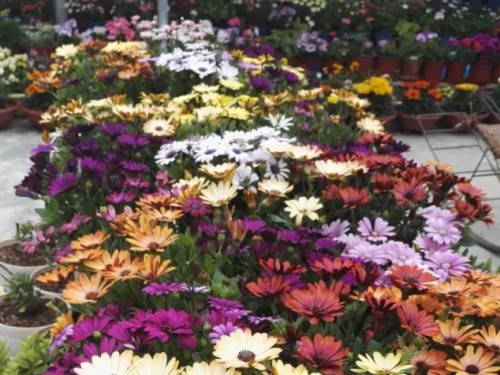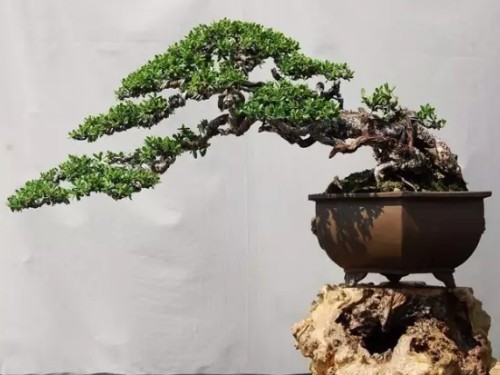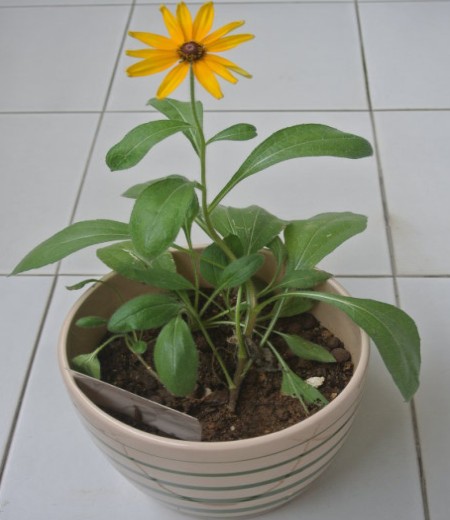Cultivation method of blue chrysanthemum
Blue eye chrysanthemum is a beautiful ornamental plant, she is alias African daisy, big flower blue eye chrysanthemum. Originally from South Africa, it is not resistant to cold. Avoid hot, like to the sunny environment, should be well-drained soil. Blue eye chrysanthemum is rich in color, there are white, lavender, dark purple and other colors, can be used in flower border, or do cut flowers.

The flower of blue-eye chrysanthemum is solitary on the branch, the tongue-shaped flower is white, the back is lilac, the center is blue-purple, and the ornamental value is high. The flowers of blue-eye chrysanthemum are beautiful and colorful, and they are deeply loved by everyone. So, do you know how to raise blue-eye chrysanthemum? The cultivation of blue chrysanthemum requires some skills, so let's take a look at it.
Temperature: given the appropriate temperature according to the requirements of specific blue-eye chrysanthemum varieties, the germination temperature of most blue-eye chrysanthemum seeds is between 20 and 25 ℃. Too high and too low temperature will directly affect the germination rate of blue chrysanthemum seeds.
Humidity: blue chrysanthemum seed sowing, water management is very critical. Watering the bottom water with a fine sprinkler before sowing, the size of the water droplets should not impact the soil surface and keep the soil surface flat. After watering, use the fungicide to irrigate again, the commonly used agent is chlorothalonil. After sowing or covering, spray water again with a fine spray nozzle, watering thoroughly, so that the seeds are in full contact with the substrate and mulching material.
Light: blue chrysanthemum seeds are beneficial to germination under light conditions. Seeds must be exposed to light after germination, otherwise the seedlings of blue chrysanthemum will grow too much. If sowing in summer, it must be shaded, otherwise the light is too strong and water evaporation is exuberant, which will affect the seed germination.
Cover: after sowing blue chrysanthemum seeds, cover the sowing pot with glass, plastic film or plastic film to maintain air humidity and keep warm in winter. Summer can not cover the film, cover the film can not be sealed, both sides must be ventilated. Remove the mulch in time after the blue chrysanthemum seeds germinate.
Transplantation: when the seedlings of blue chrysanthemum grow to be suitable for transplanting, they should be planted or planted in time, otherwise it is easy to cause excessive growth of seedlings and production delay.
Time: 2019-06-01 Click:
- Prev

Key technical points and matters needing attention in bonsai maintenance
The most important thing to raise bonsai is to have a good grasp of dry and humidity. Generally speaking, it is based on the principle of no drying and no watering. It is about once every three to four days in spring and autumn, once a day in summer, and once a week or more in winter, depending on water evaporation. It is usually better to water at eight or nine o'clock in the morning
- Next

Culture methods of Chrysanthemum morifolium
Black-hearted chrysanthemum, full name: black-hearted golden chrysanthemum (RudbeckiahirtaL.) Compositae, Chrysanthemum, herbs born in 2012. The heart of the flower is raised, purple-brown, and the peripheral petaloid florets are golden yellow. Florescence from early summer to frost. The cultivated varieties have paulownia brown, chestnut brown, double and semidouble.
Related
- Fuxing push coffee new agricultural production and marketing class: lack of small-scale processing plants
- Jujube rice field leisure farm deep ploughing Yilan for five years to create a space for organic food and play
- Nongyu Farm-A trial of organic papaya for brave women with advanced technology
- Four points for attention in the prevention and control of diseases and insect pests of edible fungi
- How to add nutrient solution to Edible Fungi
- Is there any good way to control edible fungus mites?
- Open Inoculation Technology of Edible Fungi
- Is there any clever way to use fertilizer for edible fungus in winter?
- What agents are used to kill the pathogens of edible fungi in the mushroom shed?
- Rapid drying of Edible Fungi

